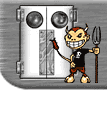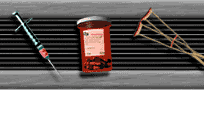P
|
Physiology changes are major compared to all other periods of growth
except infancy.
Skeletal
growth is marked in long bone and joint plates. Bone and skeletal
attachment damage can easily occur, suggesting less zealous sports
would be appropriate.
Hormones
change the body's ratio of fat to muscle and providing of sense
of strength.
If
physiological change is rapid the child will feel clumsy and awkward
- may be.
Boys
take divergent paths with self care. Athletes tend to be conscious
of diet and health, even consumed at times, while others may see
attention to diet as being "babied".
Girls
also have a change in food consumption. A slim body is a national
mental picture and many girls embark upon poor eating practices
interchanged with crash diets and pills.
Body
awareness is normal and assistance with self acceptance is really
important.
|
E
|
Identity vs. Role Confusion
This
age marks a new tension in harmonizing the past with hope for the
future.
Dreams
may be so portent that reality and being real seem shadowy and unimportant.
Boasting
of prowess - especially around peer becomes a typical way to mask
inadequacy and feelings of insecurity.
The
child might be be summed up as "I am what I imagine myself to be."
Erikson
reminds us that there is a crucial shifting in the personality.
The crisis is not limited to who i see myself becoming. Instead
it is a diffusion across most dimensions of the self. As Hazelton
noted, prior to the time of reorganization the child has a time
of chaos. Then, still in contest with parents and self over autonomy
and power to be bossed, the child works to define: self, identity,
roles in each dimension of life and with respect to different referents,
sexual identity and ideology.
|
P
|
So many things are in flux that this becomes a battle ground as well.
The person is generally at stage three (Kholberg - good boy, nice
girl), but the referent, or people to please, shifts to peers more
than the parent as the social authority.
The
student is often overwhelmed with the chaos and restructuring, so
rules and expectations become onorous and area negated as "nothing
but social notions."
The
ideological pursuit for personal belief system is littered with
parental parameters and demands, peer belief and a sense of powerlessness
to change life.
Often
this leads to actions of overthrow or unwilling adherence to "shoulds
" and "oughts."
Simple
expectations, worked out with the student and adhered to consistently
give the most safety and provide ritual as a safety net.
|
S
|
The schism between meeting parental expectations or peer norms begins
or intensifies.
The
peers are the important referent fore a youngster.
Belonging
and being accepted take on looming proportions.
The
"pre-adult" child tends to resent parental limits and frequently
rebels.
Running
away or escaping becomes commonplace. It may be a symbolic tuning
out, a physical act, substance or sex abuse.
Preoccupation
with and oversensitivity with self, appearance and others' possible
awareness of self may literally plague the youngster.
Mood
swings and goals may appear to be erratic and out of control.
The
way out of the "forest" is to keep working toward being real and
accepting the true self. Adults who help in this tasks are loved.
|
I
|
Formal Operations usually begin during this time period.
During
the initial period of early adolescence the child is too fractionated
to really add depth here.
The
latter part of the stage should see a new ability to add dimension
to ideas, to think in greater depth and with more "power".
The
student often has the ability to construct a formal or logical theory
for events which:
- stands
independent of one specific concept
- considers
the addition of new concepts
Virtuosity
becomes possible for some. |
















